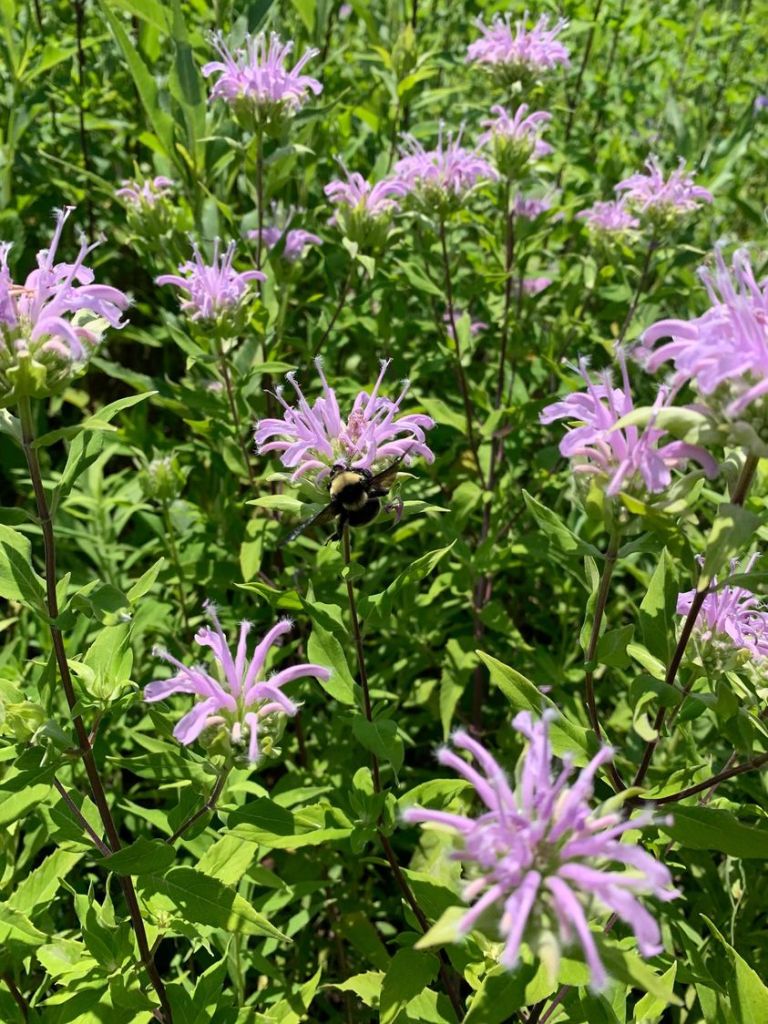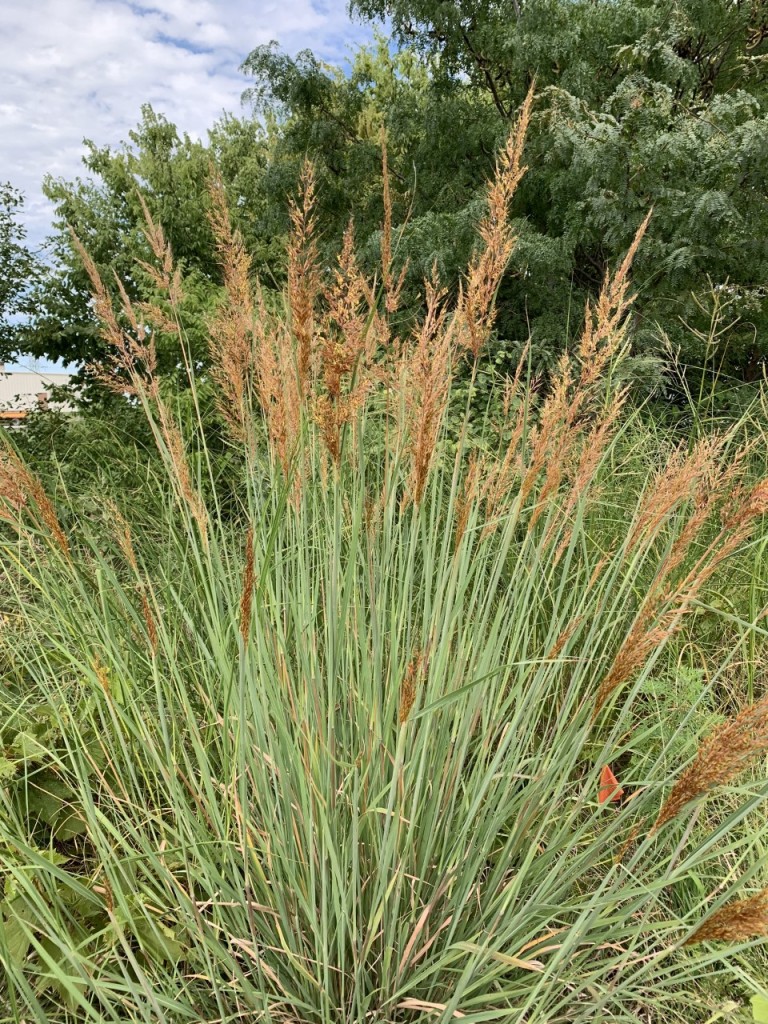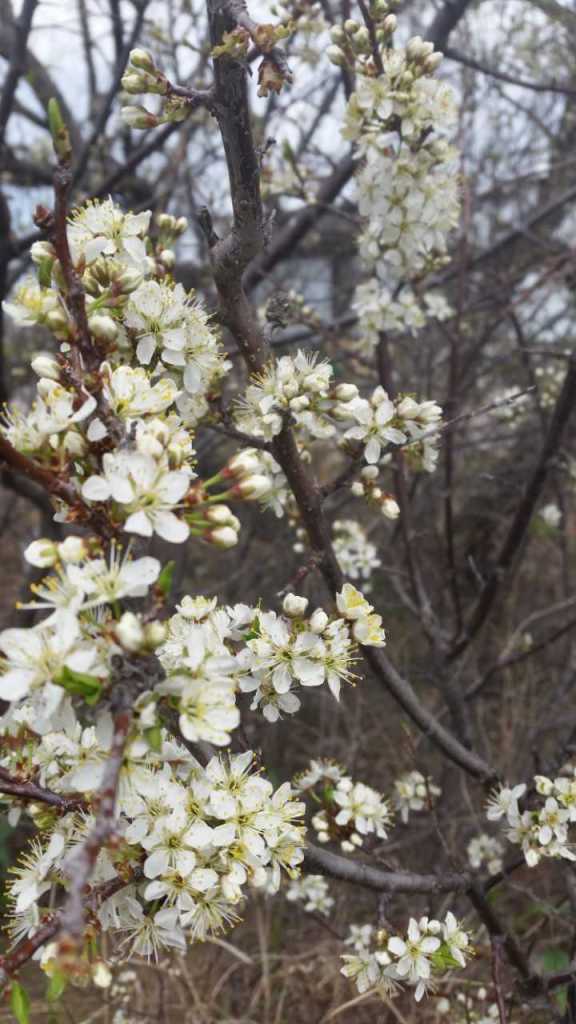The Cherry Creek Pollinator Habitat is 10 years old! In the fall of 2012, Soni Cochran and I attended “Becoming an Outdoors Woman” program in Halsey, Nebraska sponsored by Nebraska Game and Parks. One of the sessions focused on the challenges of increasing our native pollinator population. We left the session with a handmade native bee nest box and motivation to spread the message about the importance of encouraging native pollinators in our community.
In the spring of 2013, we asked our then unit leader if we could transform the underutilized space behind the Nebraska Extension in Lancaster County office into a native pollinator and wildlife habitat. The journey began and it is amazing to see how much we have accomplished and learned during this time.
A few of our accomplishments include: two educational signs, solitary bee house, two insect hotels, five water stations, over 40 native plants with name labels, over 100 stems of common milkweed for monarchs & other beneficial insects and became a Nebraska Pollinator Habitat Certification Program site member.

The habitat is a great place to teach youth, adults, Master Gardeners and even our own staff about the importance of pollinators. Every time I visit the habitat I see or learn something new.
In 2014, Soni planted one sawtooth sunflower (Helianthus grosseserratus) in the center of the Cherry Creek Habitat. This sunflower grows in tight colonies and reaches 3-5 feet tall. Unfortunately, it began to spread and I was afraid it would take over the whole habitat. Thankfully it has not, but it did overtake all the Liatris we had planted. I am impressed with hoary vervain (Verbena stricta) and wild bergamot (Monarda fistulosa). Both have done well and not been over taken by the sawtooth sunflower. All three plants are long bloomers and visited heavily by native bees.



In 2014 we also added native grasses. Indiangrass (Sorghastrum nutans) has done very well. This prairie tallgrass forms upright clumps with blue-green foliage. The beautiful seed heads tower over me, 6 – 7 feet tall. It has spread more than I like, but mainly in an area where there was poor quality fill soil. In the late fall and winter, the deer rest in this area when it snows.

We struggle to provide spring blooming plants for our early pollinators. Spring flowering bulbs do not do well in our poor quality clay soil and wildlife like to feed on them. Thankfully, we have spring flowering trees that provide early blooms: Eastern redbud (Cercis canadensis), wild plum (Prunus americana) and peachleaf willow (Salix amygdaloides).

Several volunteer trees and shrubs try to get established in our habitat. It is important to remove them when they are young seedlings and not allow them to get established in our native flower area. Gray dogwood (Cornus racemose), autumn olive (Elaeagnus umbellata), red mulberry (Morus rubra), green ash (Fraxinus pennsylvanica), and eastern cottonwood (Populus deltoids) have been removed from the habitat.
Soni and I attended a workshop by Dr. Ted Burk with the Department of Biology at Creighton University. He and his students have done butterfly and plant species research for eight years at Allwine and Bauermeister Prairies. They developed a list of plants found in Nebraska that attract butterflies. At the top of the list was tall thistle. We immediately decided we needed to add this plant to the Cherry Creek habitat. We had learned tall thistle (Cirsium altissimum) is a native plant and biennial. Not a noxious weed menace like musk thistle (Carduus nutans). We knew we would be criticized for this selection. Soni and I understood, we were both former farm kids and spent our summers rogueing out thistles and other weeds. We transplanted one plant and waited for it to bloom. When that day arrived we were in awe of the insects that were visiting the flowers. Swallowtails, bumblebees and native bees we had never seen before. It did not take long for others to notice the blooming thistle and they were not happy. One fellow staff member, who was a former farm kid too, showed up at my office door with a spade and said they were on their way to dig it out. I was ready and calmly explained the difference between tall and musk thistle. I explained tall thistle was a native thistle and was not on the noxious weed list. I showed them how to tell the difference and explained we had all been mislead growing up that ALL thistles were bad. Thankfully they backed down and today many tall thistles are growing in the Cherry Creek Pollinator Habitat.

It has been a rewarding and educational experience for me to help create and manage the Cherry Creek Pollinator Habitat. I am happy to share what I learn.
Mary Jane Frogge
